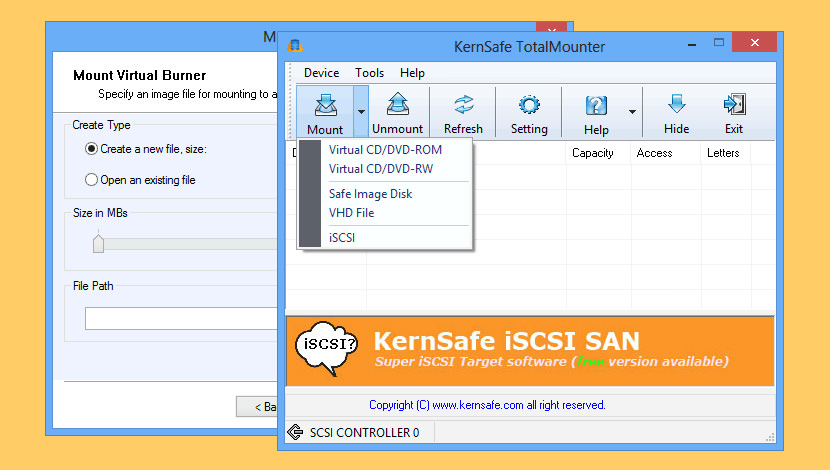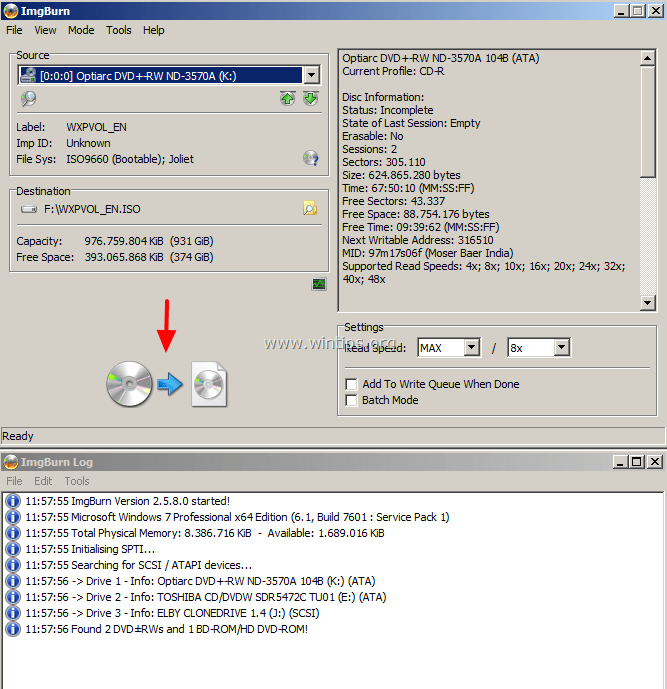

- Create dvd image windows 10 how to#
- Create dvd image windows 10 manual#
- Create dvd image windows 10 upgrade#
- Create dvd image windows 10 full#
- Create dvd image windows 10 for windows 10#
On the "Re-image your computer" page, select the Use the latest available system image option. Select the Windows 10 option as the target OS. On the "Windows Setup" page, click the Next button.Ĭlick the Repair your computer option from the bottom-left corner of the screen. It is recommended to check your manufacturer support website for more specific details. You can use this guide to access the BIOS/UEFI, but the steps are usually different per manufacturer and device model. Quick tip: If the device does not start in the Windows Setup wizard, you will need to access the Basic Input/Output System (BIOS) or Unified Extensible Firmware Interface (UEFI) to change the boot order settings. On the USB bootable drive startup prompt, press any key to continue.

Create dvd image windows 10 full#

To restore a backup on Windows 10, use these steps: If you need to replace the hard drive or hardware failure occurs, you can use one of the backups to recover the device and files.
Create dvd image windows 10 how to#
How to restore a backup with system image tool on Windows 10 If you have valuable data, you may want to consider keeping the backup in a different physical location. While the backup is in progress, you can continue working on the device since it uses the "Shadow Copy" feature to backup files even if files are open and apps are running.Īfter the process is complete, you can disconnect and store the external drive in a safe place. Once you complete the steps, the tool will create an image of the entire system that includes everything on the primary hard drive and other drives you may have selected. If you have to restore the machine, you can use a USB installation media to access the recovery enviroment. Quick note: You'll also receive a prompt to create a system repair disc, but because most devices no longer include an optical drive, you can skip it. (Optional) Select any additional hard drives to include them in the backup. Use the "On a hard disk" drop-down menu and select the location to export the Windows 10 full backup. Under the "Looking for an older backup?" section, click the Go to Backup and Restore (Windows 7) option.Ĭlick the Create a system image option from the left pane. To create a full backup of Windows 10 with the system image tool, use these steps: However, it is best to use removable storage, which you can then disconnect and store in a different physical location. The system image tool allows you to create a full backup to an external drive or network shared folder. How to create a backup with system image tool on Windows 10 You can also read this guide with alternative ways to back up your computer. The instructions outlined in this guide are meant to create a temporary full backup while the feature is still available.
Create dvd image windows 10 for windows 10#
Quick note: The System Image Backup tool for Windows 10 is no longer a maintained feature, but you can still use it for the foreseeable future.
Create dvd image windows 10 manual#
However, if you do not want to use manual methods or third-party tools, you can always create a full backup using the legacy built-in System Image Backup tool.Ī system image is another way to say "full backup," as it contains a copy of everything on the computer, including the installation, settings, apps, and files. For example, you can use third-party solutions to backup the entire system or copy files to an external drive manually or upload them to a cloud storage service like OneDrive. If you use Windows 10, you have many different methods to create a backup.

If you are not proactively creating full backups, you will be putting at risk documents, priceless pictures, and configurations you have spent long hours setting up.
Create dvd image windows 10 upgrade#
As part of your recovery plan, a full backup should be at the top of your list since it is the best strategy against hardware failure, and apps and upgrade problems, as well as malware attacks that can corrupt your files and damage your Windows 10 installation.


 0 kommentar(er)
0 kommentar(er)
